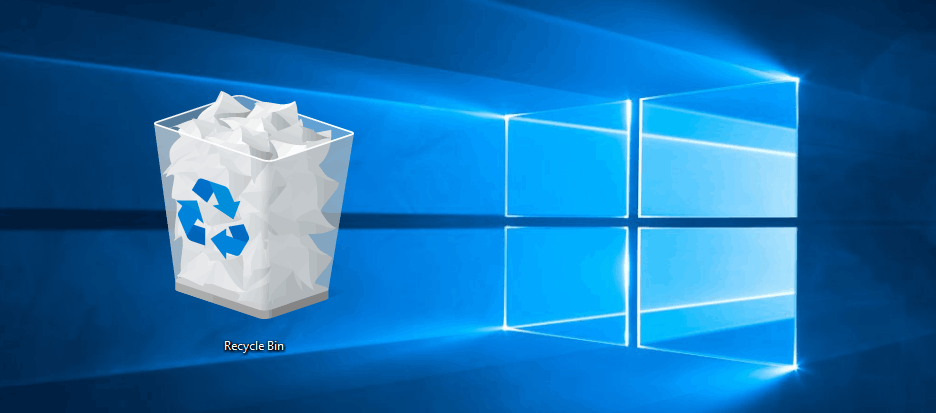Trash or Recycle Bin, as well known in Windows, is a specific file location that accumulates files that are deleted by a user. The Recycle Bin stores erased files, as the deleted files usually remain in it until it is either emptied or if the storage limit of the folder is exceeded.
The Recycle Bin in a Windows operating system is designed to have data organized according to columns such as the original location, deleted date etc. Usually located on the desktop, the Recycle bin can also be called from shell command through which you can access operating systems services.

We all know that Recycle Bin can come in quite handy when you accidentally delete files. You can just open the Bin folder from desktop and find the files you wish to recover. Right click on the file and select Restore. However it is to be noted that there are certain limitations with regards to data restoration from the Recycle Bin. The below information will briefly explain every limitation and will help understand how to recover deleted files beyond all these limitations. The limitations of the Recycle Bin are:
- Storage Limitation – the Recycle Bin folder has a limitation to the number of deleted files it can save. However the storage setting can be configured by right clicking on the Recycle Bin icon on desktop and selecting Properties. In the properties window, under settings for selected location, if you select custom size and predefine the allotted maximum size in MB. The size of bin can be allocated for each of the existing drive on the computer.
If the existing deleted files in the folder exceed the specified size, the oldest files are disposed to make space for those that have been recently deleted. The disposed files cannot be restored using normal methods. - Limitation with regards to methods used for deletion – there are quite a lot of ways you can delete a file. Each of these ways has its own mechanism on how to dispose the file. Let’s have a quick glance into what mechanisms act as limitations for the Recycle Bin folder:
- Files deleted using Command Prompt (CMD): A file can be deleted using “del /f name.ext” where the name corresponds to the file name and .ext corresponds to the file extension. A file removed this way is permanently erased and it cannot be found in the Recycle Bin.
- Files deleted using “SHIFT+DELETE” short-cut: “SHIFT+DELETE” is a key combination used to permanently delete a file. This short cut executes file removal bypassing the Recycle Bin and hence these files cannot be restored.
- Deleted files from removable media: When you plug in a USB drive, external hard drive or memory card to delete data, it doesn’t generally end up in the Recycle Bin. This is because the Microsoft Recycle Bin is only designed to hold back data that is deleted from the internal hard drive on which the operating system is installed. Hence any deleted data from any removable media cannot be restored from within the Recycle Bin.
- Data deleted from network drives: As discussed in the previous section, Recycle Bin can only recover data that exists on the internal drive. However it can also be configured for network drives. The configuration procedure however falls beyond the scope of this article. Consequently, by default, the deleted data from network won’t be available in the Recycle Bin until and unless it is configured accordingly.
To conclude, now that we have learned all the limitations of the Recycle Bin, we now know that only the files deleted from Windows explorer can be restored. As all the limitations mentioned above restrict a user to recover deleted files from the Recycle Bin, only a file recovery software for Windows can recover data in such scenarios.
Remo Recover: a complete data recovery software for deleted files
Due to the above mentioned drawbacks of the Recycle Bin, a more powerful and stronger approach is required in order to perform deleted file recovery. Remo Recover scans the hard drive sector by sector to look for deleted files beyond the file system. Equipped with a robust algorithm the software recognizes files by signature and makes them recoverable. The tool also supports file recovery from any removable media like memory cards, USB drive or portable hard drive. Lastly if you have deleted files using CMD or any other short cut, Remo Recover is the right tool to recover such deleted files.






